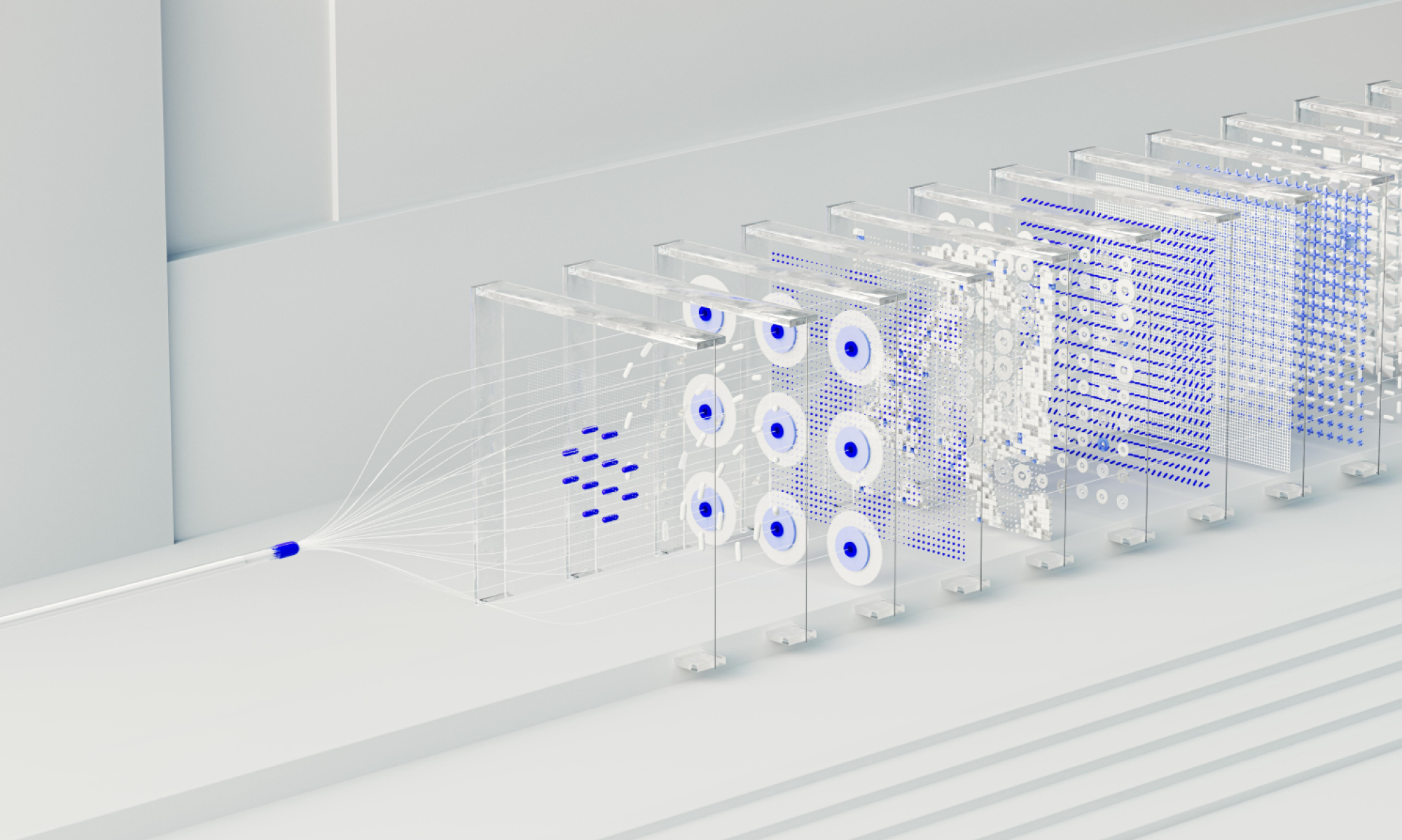AI
our blog
10 Benefits of Rapid Application Development for Business Success

Overview
The primary advantages of rapid application development (RAD) for business success are significant:
- Faster time-to-market
- Cost efficiency
- Enhanced user feedback
- Improved collaboration
These factors collectively foster a more agile and responsive development process. Furthermore, RAD methodologies empower organizations to swiftly adapt to market fluctuations, effectively reduce development costs, and leverage continuous feedback to elevate customer satisfaction. This strategic approach positions businesses for sustained growth and a competitive edge in their respective markets.
Introduction
Rapid application development (RAD) has emerged as a transformative strategy for businesses aiming to enhance operational efficiency and adapt to the rapidly evolving digital landscape. By prioritizing speed, flexibility, and user-centric design, RAD empowers organizations to accelerate product development cycles, minimize costs, and significantly elevate customer satisfaction.
However, as companies adopt this innovative methodology, they must also navigate the complexities and potential pitfalls associated with rapid iterations and shifting requirements.
How can businesses harness the advantages of RAD while effectively managing its challenges to secure a competitive edge in their respective markets?
Studio Graphene: Accelerating Product Development with Rapid Application Development
Studio Graphene harnesses the power of rapid application development to optimize its workflow processes, ensuring a comprehensive approach that includes Discovery, Design, and Build services.
In the Discovery phase, we define your vision and outline requirements, focusing on end-user needs and translating them into functional specifications.
During the Design phase, our team merges creativity with user-centric principles to craft engaging digital experiences.
Finally, in the Build phase, we assemble a diverse team committed to transforming your vision into reality.
By prioritizing rapid prototyping and iterative feedback cycles, we swiftly respond to client requirements and evolving market conditions. This approach accelerates the creation timeline and ensures the final outcome aligns with user expectations, significantly contributing to business success.
The integration of AI technologies further enhances this process, facilitating data-driven decision-making throughout the project lifecycle.
Our clients consistently commend our proactive engagement and communication strategies, with testimonials underscoring the effectiveness of our structured approach.
Additionally, our B Corp Certification highlights our commitment to social and environmental performance.
Thus, Studio Graphene exemplifies how rapid application development, backed by a client-oriented focus, can enhance development efficiency and effectiveness in the digital landscape.
Faster Time-to-Market: How RAD Shortens Development Cycles
Rapid application development significantly accelerates the time required to launch products into the market. By leveraging iterative cycles and prioritizing prototypes, teams can swiftly engage in rapid application development, allowing for the testing of features and rapid adjustments based on user feedback. This agility empowers businesses to adapt to market fluctuations and seize new opportunities ahead of their competitors.
Companies that utilize rapid application development (RAD) methodologies have reported a decrease in cycle times by up to 70% compared to traditional methods, as indicated in industry reports. This advantage is particularly pronounced for tech companies, where the typical cycle for rapid application development can be considerably shorter—often only a few weeks—compared to several months or even years for traditional methods.
As Saurabh Singh, CEO & Director, articulates, "Rapid Mobile Application Development (RMAD) enables businesses to stay ahead in the competitive market by simplifying coding complexities and offering streamlined workflows." Furthermore, the COVID-19 pandemic has underscored the necessity of such speed and flexibility, with a marked increase in demand for digital applications across various sectors.
In this fast-paced environment, rapid application development not only enhances operational efficiency but also enables companies to thrive in an ever-evolving landscape. However, it is essential to acknowledge that RAD can lead to increased technical debt due to frequent code changes, which organizations must manage carefully.
The global market for rapid application development is projected to register a CAGR of 42.8% from 2025 to 2030, highlighting the growing importance of this approach in the current business landscape.

Cost Efficiency: Reducing Development Expenses with RAD
Implementing rapid application development (RAD) offers substantial cost savings in software production. By reducing the reliance on extensive documentation and facilitating rapid application development, organizations can avoid the high expenses typically associated with traditional methods. According to Gartner, organizations that adopt rapid application development methodologies experience a 30% reduction in time-to-market compared to conventional approaches, allowing for quicker and more efficient product introductions. Furthermore, continuous feedback mechanisms foster early issue detection, minimizing the risk of costly rework later in the project lifecycle. This proactive strategy not only enhances project quality but also contributes to overall financial efficiency.
Notable examples underscore these advantages:
- Cleveland Clinic, for instance, improved appointment booking efficiency by 30% through a system based on rapid application development, resulting in significant cost savings via optimized resource allocation.
- Similarly, American Express exemplifies the financial benefits of rapid application development, having launched a new rewards program in just six months by applying RAD principles. This not only shortened creation time but also elevated customer satisfaction by 40%, thereby increasing revenue potential.
Such cases illustrate the financial merits of rapid application development, making it a prudent choice for organizations aiming to refine their software development processes.
Looking ahead, the market for rapid application development (RAD) is projected to grow at a CAGR of 42.8% from 2024 to 2029, signaling increased adoption and potential financial advantages for organizations that implement rapid application development methodologies. This growth trajectory reinforces the notion that embracing rapid application development is not merely a strategic decision but a necessary evolution in the software development landscape.

Enhanced User Feedback: Iterative Development in RAD
A fundamental principle of rapid application development (RAD) is the prioritization of stakeholder feedback. Involving participants throughout the development process enables teams to gather essential insights that influence design choices. This iterative method not only encourages ongoing enhancement but also ensures that the final result satisfies and frequently exceeds customer expectations. Regular feedback loops are crucial for identifying potential issues early, leading to a more refined and user-friendly outcome.
To improve client involvement, organizations can adopt effective strategies such as:
- Regular check-ins with clients
- Utilizing surveys to collect feedback
- Creating testing sessions to observe interactions with the offering
Statistics indicate that organizations prioritizing client feedback can anticipate a remarkable 70% rise in customer satisfaction ratings, illustrating the direct correlation between engagement and product success. Significant instances include Adobe, which reported a 25% rise in customer satisfaction after implementing feedback-driven modifications within its iterative creation process. Similarly, Airbnb experienced a 40% boost in bookings following improvements based on client input through the use of rapid application development practices. These instances illustrate how iterative processes enhance individual experiences and propel business success.

Flexibility: Adapting to Change with Rapid Application Development
Rapid Application Development (RAD) is a vital solution for organizations aiming to stay competitive in today's fast-paced market. Its inherent flexibility empowers teams to swiftly adapt to evolving requirements and market dynamics, which is essential as customer preferences and technological advancements shift rapidly. By emphasizing iterative progress, rapid application development (RAD) facilitates effective pivots, ensuring that the final product not only meets but exceeds market expectations.
Technology leaders consistently highlight that adaptability is vital for businesses aiming to thrive. Companies utilizing rapid application development have adeptly navigated shifts in consumer demand, showcasing the resilience and responsiveness this approach fosters. Notable case studies, such as startups in e-commerce and fintech, illustrate how rapid application development facilitates the rapid launch of customer-facing applications, allowing these organizations to meet user expectations promptly.
Furthermore, integrating automated alerts within the RAD framework enhances collaboration and ensures timely intervention, thereby limiting potential irreversible damage. This capability allows teams to effectively inform stakeholders, collaborate on challenges, and swiftly resolve incidents, underscoring the significance of adaptability throughout the development process. As businesses increasingly confront uncertainty, the advantages of rapid application development (RAD) in adapting even in later phases emerge as a significant benefit, positioning organizations to seize new opportunities and maintain a competitive edge.

Improved Collaboration: Strengthening Teamwork through RAD
Rapid application development fosters a collaborative environment where developers, designers, and stakeholders engage closely throughout the project lifecycle. At Studio Graphene, we enhance this teamwork through our structured approach, which encompasses Discovery, Design, and Build services.
The Discovery phase is crucial for understanding client needs and establishing clear project goals, thereby fostering alignment from the outset. During the Design phase, our team collaborates with clients to create user-centric solutions, ensuring that feedback is seamlessly integrated throughout the process. Ultimately, the Build phase emphasizes continuous communication and iterative progress, allowing for modifications based on real-time insights.
Regular meetings and open communication channels ensure alignment on project goals, cultivating a culture of collaboration that elevates the quality of the final product. By guiding clients through their complete digital experience, we not only enhance team morale and engagement but also streamline the creation process.
Research indicates that organizations prioritizing collaboration can achieve a 20% higher employee retention rate, a critical factor in maintaining a skilled workforce. Project managers have observed that effective communication within rapid application development frameworks can lead to a 50% increase in customer satisfaction, highlighting the importance of teamwork in achieving successful outcomes. Furthermore, collaborative teams are 33% more likely to complete projects on time, highlighting the significant impact of rapid application development on project efficiency and effectiveness.
By promoting a culture of teamwork, the process of rapid application development (RAD) not only improves the creation process but also enhances the overall success of tech projects.

Risk Management: Lowering Project Risks with RAD
Rapid application development (RAD) effectively reduces project risks by breaking the creation process into smaller, manageable iterations. This iterative approach empowers teams to identify and address potential issues early on, thereby diminishing the likelihood of major failures later in the project lifecycle. By consistently testing and refining the offering based on user feedback, RAD ensures that the final deliverable closely aligns with market demands, thereby minimizing the risk of misalignment with customer expectations.
For instance, implementing risk management strategies such as risk burndown charts and sprint retrospectives enables teams to visualize and prioritize risks effectively. This proactive approach not only enhances visibility but also cultivates a culture of continuous improvement, where feedback is actively sought and integrated into the development process. Consequently, rapid application development not only reduces project risks but also accelerates the delivery of operational solutions, enabling businesses to generate revenue sooner and adapt to shifting market conditions.
Moreover, the principle of 'failing fast' within rapid application development encourages teams to explore and test ideas early, allowing them to identify ineffective approaches before committing substantial resources. As Julia Martins aptly articulates, "Think of the iterative process like refining a recipe—you start with a basic version, test it out, gather feedback, and tweak it until it's just right." This iterative refinement process enables teams to prioritize risks based on their potential impact and likelihood, empowering them to concentrate their efforts where they are most needed, ultimately resulting in higher quality outcomes and reduced financial risk.
However, it is crucial to recognize that iterative processes can also present challenges, such as scope creep and ambiguous timelines, which require effective management. By balancing these risks with the advantages of rapid application development, organizations can leverage its strengths to enhance project outcomes.

Increased Customer Satisfaction: Delivering Value with RAD
Rapid Application Development (RAD) highlights the essential role of client feedback and iterative processes, ensuring that the final outcome aligns closely with customer expectations. This unwavering commitment to delivering value significantly enhances customer satisfaction and fosters loyalty, ultimately leading to repeat business. Research indicates that companies that utilize rapid application development methodologies have experienced a remarkable 25% increase in customer satisfaction, showcasing the effectiveness of this approach. When clients perceive their needs as prioritized, they are more likely to advocate for the offering, resulting in favorable word-of-mouth and a broader market presence.
For instance, Studio Graphene successfully designed and developed a customer-facing mobile app and a mobile-responsive web presence for Alchemy Wings. This platform features a simple, easy-to-navigate UI that streamlines the ordering process. Not only did this improve the experience for participants, but it also provided access to detailed sales information via an admin portal. This illustrates how rapid application development can produce innovative digital solutions. Such examples underscore how businesses can enhance customer loyalty through rapid application development by focusing on user-centered design and continuous improvement, ultimately creating products that resonate with their audience.

Scalability: Growing Your Business with RAD
Rapid application development empowers businesses to effectively expand operations by facilitating swift modifications and enhancements to applications in response to increasing client demands. This iterative framework allows for the seamless integration of new features without requiring a complete system overhaul, a flexibility that is essential for organizations striving to enhance their market presence and service offerings.
Continuous Integration plays a pivotal role in this process, streamlining the deployment of updates through automated builds and tests, which enable one-click deployments and rollbacks. Firms that leverage rapid application development can reduce production time by as much as 50%, allowing them to swiftly adapt to changing market conditions and client feedback.
As noted by James Martin, 'RAD reduces the time-to-market and provides businesses with a competitive edge as any changes can be quickly incorporated into the business.' Furthermore, the market for rapid application development is projected to experience a CAGR of 42.8% from 2022 to 2027, highlighting the increasing importance of rapid application development methodologies in driving sustained growth.
By adopting rapid application development methodologies alongside Continuous Integration practices, businesses can ensure that their applications are not only functional but also scalable, effectively accommodating rising demands and fostering sustained growth.

Strategic Advantage: Leveraging RAD for Business Success
Adopting rapid application development provides businesses with a significant strategic advantage in today's competitive landscape. Organizations that implement rapid application development methodologies experience an impressive 30% reduction in time-to-market, which enables them to respond swiftly to evolving market demands. Furthermore, firms that utilize rapid application development (RAD) report an average of 20% cost reductions compared to conventional model approaches, thereby enhancing overall cost efficiency.
This proactive approach, characterized by its iterative nature, not only allows businesses to stay ahead of their competitors but also supports rapid application development, cultivating a culture of innovation and continuous improvement. For instance, organizations that employ rapid application development (RAD) have successfully launched new products that closely align with consumer needs, resulting in increased customer satisfaction and loyalty. A notable example is the application of rapid application development by firms such as WaveMaker, which reported a remarkable 75% decrease in creation time, illustrating how rapid application development can yield substantial market benefits.
Moreover, with 78% of IT professionals believing that businesses often misalign with project requirements, the emphasis on participant involvement in rapid application development becomes crucial. This methodology incorporates rapid application development to streamline operations and empower businesses to adapt and thrive in dynamic markets, ensuring long-term success and resilience against competitive pressures. To fully leverage rapid application development, CTOs should prioritize integrating user feedback throughout the rapid application development process, ensuring that their products not only meet market demands but also exceed user expectations.

Conclusion
Rapid application development (RAD) stands out as a transformative approach that significantly enhances business success by emphasizing speed, efficiency, and adaptability. By leveraging iterative processes, organizations can accelerate product development and ensure their offerings align closely with customer expectations. This methodology fosters a culture of continuous improvement, enabling businesses to thrive in competitive markets.
The article highlights key benefits of RAD, including:
- Faster time-to-market
- Cost efficiency
- Enhanced user feedback
- Flexibility
- Improved collaboration
- Risk management
- Increased customer satisfaction
- Scalability
Each of these elements plays a critical role in shaping successful outcomes, demonstrating how RAD methodologies can lead to substantial reductions in development cycles, operational costs, and project risks. Notable examples from industry leaders underscore the tangible advantages that accompany the adoption of RAD practices.
As businesses navigate an ever-evolving landscape, embracing rapid application development is not merely a strategic choice; it is a necessity for long-term growth and resilience. By prioritizing user feedback and fostering collaboration among teams, organizations can better adapt to changing demands and seize new opportunities. Ultimately, the integration of RAD methodologies positions companies to not only meet but exceed market expectations, ensuring sustained success in the digital age.









